3 Keys to a Smoother Ride in Your Horse Trailer
Have you ever noticed that some roadways are smoother than others? While one road may be filled with teeth-rattling potholes, others are smooth and manicured.
 Now imagine your horse standing in a horse trailer. Driving down a bumpy road with the wrong type of trailer will cause your horse to feel every single bump and dip. He’ll feel that shock up through his legs and then throughout his whole body. Upon arrival, he’ll be stressed, sweaty, and likely exhausted.
Now imagine your horse standing in a horse trailer. Driving down a bumpy road with the wrong type of trailer will cause your horse to feel every single bump and dip. He’ll feel that shock up through his legs and then throughout his whole body. Upon arrival, he’ll be stressed, sweaty, and likely exhausted.
The right type of trailer can provide shock absorption on these roadways to provide a smoother and more comfortable ride…more like that manicured highway. It will help your horse arrive fresh and energized rather than tired and anxious.
Here, we are going to share the three keys to ensure your horse trailer protects and cushions your horse like it should.
Key #1: What type of axles does your horse trailer have?
The first key to a smoother ride for your horse trailer is the wheel axles.
Brad Heath, owner of Double D Trailers, explained, “One thing we work hard on is to ensure the axles properly match the load being carried. In other words, don't use an axle that has too much capacity.”
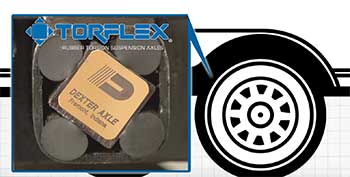 “An axle with too much capacity is called a "stiff" suspension and will result in a very bumpy ride for the horse. It’s sort of like riding in a half ton truck empty, versus a dually truck that's empty….the dually "stiff" suspension can be very bumpy when the truck is not loaded.”
“An axle with too much capacity is called a "stiff" suspension and will result in a very bumpy ride for the horse. It’s sort of like riding in a half ton truck empty, versus a dually truck that's empty….the dually "stiff" suspension can be very bumpy when the truck is not loaded.”
At Double D Trailers, we use an independent suspension system called Dexter Torflex rubber torsion suspension axles. These self-contained systems have a torsion arm that attaches directly to the trailer frame for added strength as a load barring cross member. (Watch a video of the Dextor Torflex system here.)
The actual cushioning effect is provided by a heat treated steel bar that is surrounded by four rubber cords. As the wheel moves over the ground, these cords cushion the bar and provide shock absorption.
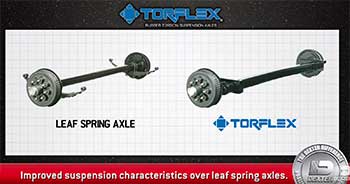 The Torflex system is superior to other competitor systems that use only 3 rubber cords and a hollow interior bar. Torflex also provides improved suspension characteristics over leaf spring axles because they do not have metal-on-metal moving parts that wear out and they provide a quieter ride.
The Torflex system is superior to other competitor systems that use only 3 rubber cords and a hollow interior bar. Torflex also provides improved suspension characteristics over leaf spring axles because they do not have metal-on-metal moving parts that wear out and they provide a quieter ride.
Key #2: Are you using the right type of tire?
Next, your trailer needs to have the right type of tire to match your load. Tires come with different sizes (measured in inches) and load ratings. The side walls of the tires have varied stiffnesses depending on their rating.
You should not use a tire that’s severe “overkill” for the load requirements. In fact, it’s vitally important to have BOTH the axles and tires correctly match your trailer load.
Brad shared a story of a client many years ago who purchased a 2 horse slant gooseneck horse trailer. The trailer weighed 4,200 lbs approximately and required two 3,500 lb axles and 15” load range C or D tires.
“The guy INSISTED we use a 6,000lb axle rather than 3,500lb, and 16" E-rated tires,” Brad shared. “He said he had had too many bearing and tire failures and wanted ‘heavy duty’ suspension.”
We built the trailer, received full payment and the client came to pick it up from the factory.
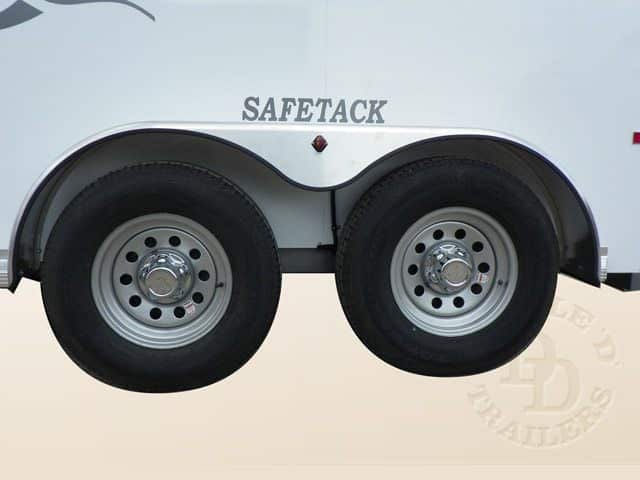
In another more recent instance, a Double D Trailers client in Florida ordered a SafeTack 2 horse gooseneck horse trailer with living quarters. The lady said her horses were both 1,500 lbs and she always hauled a full rack of hay and a fully stocked living quarters.
This client also insisted on a larger suspension system. Brad shared, “I warned her in writing ‘I recommend against this heavier suspension as, based on the load being hauled, it will transfer too much shock, vibration, and bounce back to your horse’s feet and legs’.”
Nevertheless, she wanted to push forward with the larger suspension and claimed she had previous experience with overloading axles. So Brad built the trailer and delivered.
Two months later Brad received a frantic email and phone call that while traveling with her horse he tried to jump through the drop down window! She was only hauling one horse, and he was 1,000 lbs….far from the 3,000 lbs of horse she planned to haul plus other gear.
“The trailer was very bouncy, and even my driver noted on delivery how stiff the suspension was!”
To solve the problem, Brad ended up shipping two 3,500 lb axles, and 15" size matching tires to a shop in Florida and had the entire suspension changed. She said immediately after picking up the trailer —even pulling out of the driveway— she could tell a noticeable difference.
“So these days, after two horrible experiences in building thousands of trailers, we do NOT allow customers to request "heavy duty" suspension.”
Key #3: Pay attention to your flooring type.
The final piece of the ‘smoothness’ puzzle lays directly under your horse’s feet. The material that you using in the flooring of your horse trailer can have a huge impact on the amount of heat and road vibration that is transferred up into your horse’s legs. There are three main types of flooring: Aluminum, Lumber, and Synthetic Rumber.
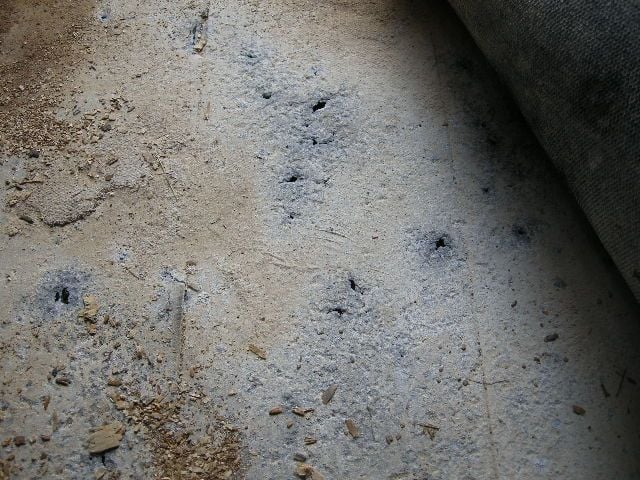
In addition, aluminum floors require heavy rubber mats or protective coatings (like WERM or Polylast) as coverings. Rubber mats can be difficult to move and also hide dangerous metal corrosion that weakens the floor. Over time, you run the risk of complete floor failure, which can be disastrous to say the least.
We also do not recommend protective coatings like WERM, Polylast, or Rhino coatings because because faulty application can allow moisture to invade the space between the lining and metal floor allowing for hidden corrosion to develop.
A much better choice for your horse trailer flooring material would be treated lumber because it transfers much less noise, heat, and vibration up from the road. They do still require rubber mats. At Double D Trailers, we use 2x8” pressure treated yellow pine for our trailers.
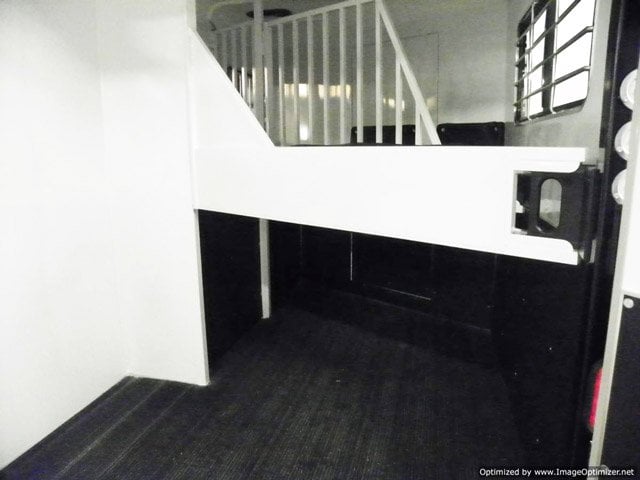
Finally, you may also choose a synthetic Rumber material to use in your horse trailer. Just like the treated lumber, this recycled material transfers less heat, noise, and vibration up from the road. Plus, it doesn’t require a rubber mat for covering! Your horse will arrive at your event with fresher legs and a calmer mind.
There you have it! The three keys to a smoother ride in your horse trailer. We hope this article helps you make informed decisions when you are ready to purchase your next trailer. As always, please feel free to reach out to Brad with any questions.

